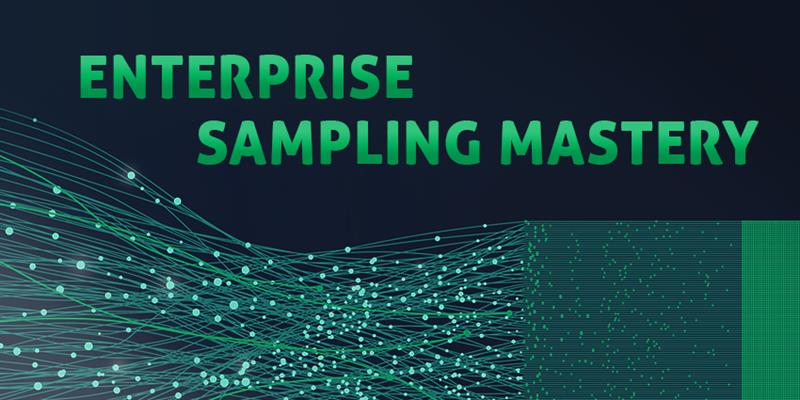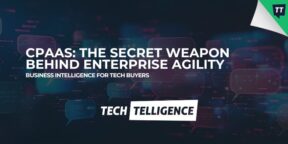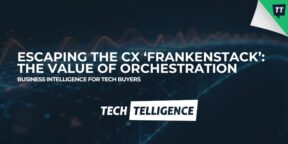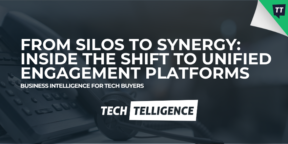Data is everything – particularly for technology brands looking for opportunities to grow, become category-leaders, or unlock new opportunities. But basing your decisions on bad data is worse than using no data at all. That’s where the right enterprise sampling methodology comes in.
According to Gartner, poor quality data costs businesses around $12.9 million every year. Basing your decisions on the wrong insights means you miss out on revenue and opportunities.
Ultimately, if you don’t have the right sources for your data – you don’t get the insights you need. That’s why you need to pick the participants for your research initiatives carefully. For instance, at Techtelligence, we’re all about empowering tech brands, so we source insights from proven industry leaders in the tech industry. Makes sense, right?
For tech intelligence, who you ask is just as important as what you ask. So, how do you master the art of enterprise sampling?
Mastering Your Enterprise Sampling Methodology
If you’re unsure, enterprise sampling is a method used in business research, which focuses on choosing “valuable” sources for your data and insights. For example, at Techintelligence, we focus on sourcing information from companies with real-world experience, and in-depth knowledge of specific technology sectors.
The trouble is many companies conducting their own B2B tech research make the mistake of just choosing participants at random. Anyone who has the time to submit an answer to a question is included in the sample – and that leads to confusing data.
Here’s how you can upgrade your enterprise sampling methodology.
Step 1: Identifying Participants for your Enterprise Sampling Methodology
In the world of B2B tech research, not all insights are created equal. Say you’re creating a report about the impact of AI on customer experience. Obviously, you’re going to need participants that aren’t just using artificial intelligence – but also seeing results in their CX strategy.
So, whenever you’re investing in new research, start with your participant identification framework – basically, the guide to identifying who you want to interview, survey, or analyze.
Let’s start with buyer committee mapping. In B2B tech, purchasing decisions aren’t made by a single person; they’re made by a team – the buyer committee. Understanding who’s at the table (CIOs, procurement managers, end-users) ensures you’re capturing well-rounded insights.
For example, if we’re researching how extended reality influences employee training, we wouldn’t just speak to CEOs, we’d speak to CTOs, and individual employees that used XR training tools.
Next, think about decision-maker hierarchy analysis. The C-Suite might sign-off on tech purchasing decisions, but mid-level managers and technical leads often have the real influence over tech adoption. If your research only skims the top, you’re missing the deeper currents of decision-making.
Industry segmentation adds another layer. A SaaS company’s priorities differ wildly from those of a semiconductor manufacturer. Grouping respondents by vertical ensures your data actually applies to real-world market conditions.
Finally, company size matters. Enterprise giants operate differently than scrappy startups. Stratifying your sample by revenue and employee count ensures that your insights don’t just favor one end of the spectrum. Get a holistic view of what’s really happening in the industry.
Step 2: Quality Control in Enterprise Sampling
As mentioned above, bad data is worse than no data at all. If your insights are built on a shaky foundation of unverified, low-quality responses, your entire strategy could collapse like a house of cards. That’s why quality control matters in your enterprise sampling methodology.
First, create “validation protocols” for your research strategy. When we invite people to take part in our research here at Techtelligence, we don’t just accept every response. We do our research. Industry-specific screeners, LinkedIn verification, and ross-referencing against CRM and firmographic databases ensure your participants are who they say they are – and that they actually have the expertise to really weigh in.
Remember, validation doesn’t just stop at double-checking the identity of your research participants – it extends to response quality. Automated and manual response scoring helps weed out low-effort answers, inconsistencies, and suspicious patterns. You don’t want all your answers to be generated by ChatGPT, or copy-pasted from another report.
Next, identify your data accuracy benchmarks. How do you know if your responses reflect reality? Comparing results against known industry trends, previous high-confidence datasets, and third-party benchmarks helps flag any anomalies before they skew your findings.
If your research indicates that no-one is actually using AI, for example, you might assume you’ve stumbled onto a shocking revelation – but realistically, you’re probably working with the wrong data.
And of course, duplicate detection is a must. Using digital fingerprinting, IP tracking, and unique identifier matching, you can ensure your sample isn’t getting padded by repeat respondents trying to game the system.
Step 3: Advanced Enterprise Sampling Methodology Techniques
Conducting B2B tech research is hard – trust us, we get it. Technology can help. In the B2B landscape, where data quality is everything, handling everything from validation to sample selection manually leads to a range of errors and mistakes.
So, invest in cutting-edge technology. Use AI-powered participant matching tools to really home in on the best people for your research. This way, instead of blindly recruiting participants from industry lists, you can use AI to sift through the options. AI tools can examine professional networks, behavioral data, and historical insights to pinpoint exactly the right experts. We’re talking people with the authority, influence, and deep knowledge to provide real value.
Then, there’s predictive quality scoring. Before a respondent even answers a question, algorithms assess their credentials, engagement history, and response behaviors to flag potential low-quality participants. That way, you can reduce the risk of tainting your data.
At Techtelligence, we also invest in multi-stage validation processes, using a combination of manual reviews, cross-referencing firmographic data, and ongoing monitoring to filter out unqualified or biased respondents. Plus, with response pattern analysis, we can identify quickly if someone is spamming generic answers, or just saying the same thing over and over.
The result is rock-solid, decision-ready insights, that actually make a difference.
Enterprise Sampling Methodology: Implementation Guide
A great enterprise sampling methodology isn’t just a strategy, it’s a careful process. If you want research that delivers actual business impact, like discovering that 67% of businesses prioritize AI when choosing UC tools, you need to master this process.
- Define Your Ideal Sample: Before you do anything, lock in who you need to reach. Use buyer committee mapping, industry segmentation, and company size stratification to create a detailed participant profile. Precision here prevents headaches later.
- Set a timeline: You can’t rush great insights, but you also can’t allow your research to drag on forever. Set deadliness for participant selection and validation, data collection and quality control, analysis, and initial insights, and final report creation.
- Allocate a budget: Make sure you have the resources you need to facilitate your research. How much can you afford to spend on software for discovering participants, quality control, and reporting? How are you going to track your expenditure?
- Measure ROI like a pro: Data is an investment, so make sure you track the returns. Monitor how your insights influence your decisions, help you cut costs, or drive innovation among your teams.
When done right, enterprise sampling isn’t just about gathering data – it’s about fueling smarter, faster, and more profitable decisions.
Enterprise Sampling: Turning Data into a Competitive Edge
At the end of the day, enterprise sampling isn’t just about gathering opinions—it’s about securing high-quality, decision-ready intelligence that drives real business outcomes. The difference between data that collects dust and data that fuels action? Precision, quality control, and strategic execution.
So, how do you know if you’ve nailed it? Look at key success metrics: Are your insights influencing decisions? Are they aligning with industry benchmarks? Is your ROI clear in faster decision-making, reduced risk, and better market positioning? If the answer is yes, you’re on the right track.
Start refining your sampling strategy today, experiment with advanced methodologies, and turn your research into a competitive weapon. The companies winning in B2B tech aren’t just collecting data – they’re mastering the art of high-quality intelligence. Now it’s your turn.









